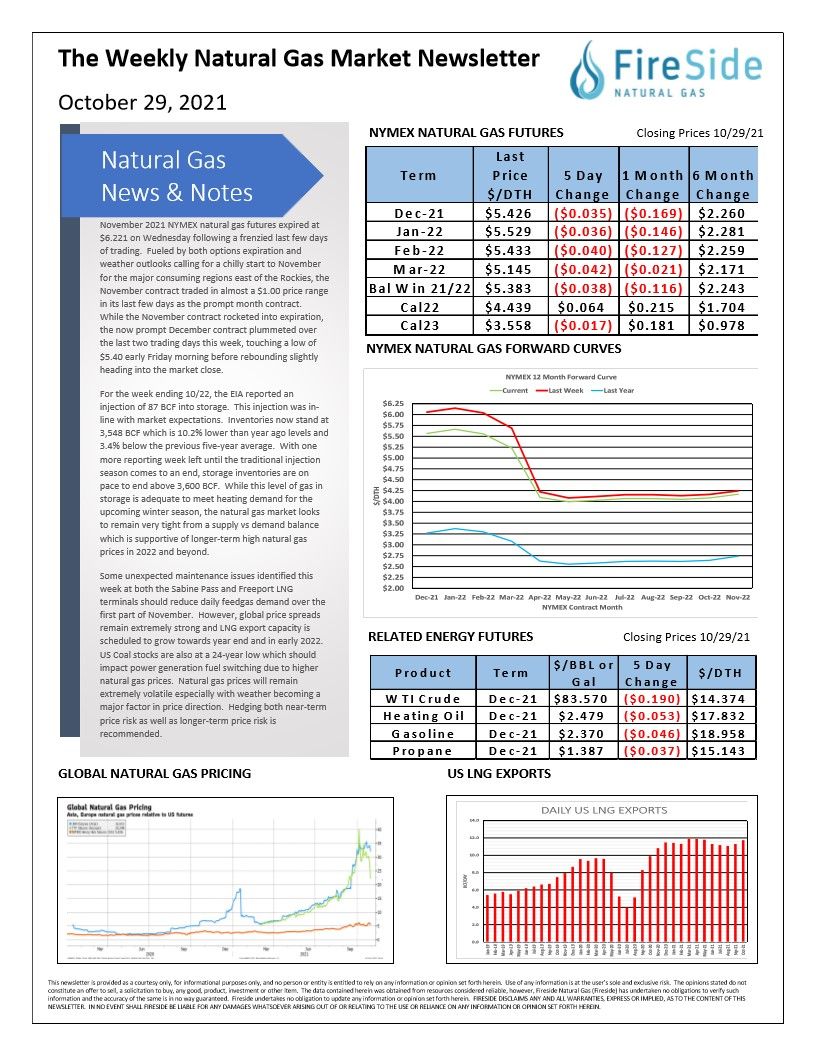The Weekly Natural Gas Market Newsletter November 1, 2021
The Weekly Natural Gas Market Newsletter
November 1, 2021
Natural Gas News & Notes
November 2021 NYMEX natural gas futures expired at $6.221 on Wednesday following a frenzied last few days of trading. Fueled by both options expiration and weather outlooks calling for a chilly start to November for the major consuming regions east of the Rockies, the November contract traded in almost a $1.00 price range in its last few days as the prompt month contract. While the November contract rocketed into expiration, the now prompt December contract plummeted over the last two trading days this week, touching a low of $5.40 early Friday morning before rebounding slightly heading into the market close.
For the week ending 10/22, the EIA reported an injection of 87 BCF into storage. This injection was inline with market expectations. Inventories now stand at 3,548 BCF which is 10.2% lower than year ago levels and 3.4% below the previous five-year average. With one more reporting week left until the traditional injection season comes to an end, storage inventories are on pace to end above 3,600 BCF. While this level of gas in storage is adequate to meet heating demand for the upcoming winter season, the natural gas market looks to remain very tight from a supply vs demand balance which is supportive of longer-term high natural gas prices in 2022 and beyond.
Some unexpected maintenance issues identified this
week at both the Sabine Pass and Freeport LNG
terminals should reduce daily feedgas demand over the
first part of November. However, global price spreads
remain extremely strong and LNG export capacity is
scheduled to grow towards year end and in early 2022.
US Coal stocks are also at a 24-year low which should
impact power generation fuel switching due to higher
natural gas prices. Natural gas prices will remain
extremely volatile especially with weather becoming a
major factor in price direction. Hedging both near-term
price risk as well as longer-term price risk is
recommended.


